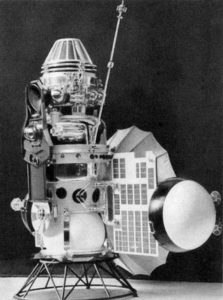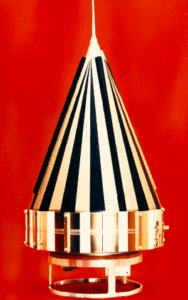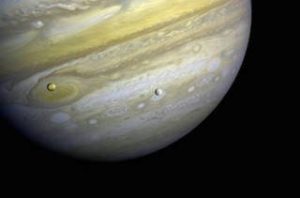
Photo: Local residents of Tombstone, AZ standing with the 6″ Alvan Clark & Sons telescope Andrew Douglass used to test the viewing conditions in potential observatory locations.
March 1, 1966: Venera 3 impacts Venus

The Venera 3 space probe | NASA
On March 1, 1966, Soviet space probe Venera 3 successfully landed on the surface of Venus. Not only was it the first the first craft to land on another planet, it was also the first man-made object to make contact with an extraterrestrial surface other than the Moon. The probe was intended to land on Venus, transmitting information back to Earth as it descended toward the planet’s surface. On February 16, 1966, ground control lost contact with the probe just before it entered the atmosphere. Though it was unable to gather the information scientists had hoped for, it still became the first man-made craft to touch an extraterrestrial surface when it landed on the Venusian surface on March 1.

The Pioneer 4 Space Probe | NASA
March 3, 1959: Pioneer 4 is launched
Pioneer 4 was an American space probe launched on March 3, 1959, with the mission of photographing the Moon. It was the first craft to successfully break through Earth’s atmosphere, a feat that wasn’t accomplished by its predecessor Pioneer 3. After leaving the atmosphere, Pioneer 4 traveled towards the Moon but missed its trajectory. Because of this, the probe’s image sensor wasn’t triggered and no images were captured. However, after mission control lost contact on March 6, the probe entered heliocentric orbit and became the U.S.’s first spacecraft to orbit the Sun. Despite failing its primary objective, Pioneer 4 gathered vital data on the Earth’s radiation belts, helped scientists develop improved methods of tracking spacecrafts, and paved the way for later Moon missions.
March 4, 1979: Voyager 1 flies past Jupiter

A closeup of Jupiter’s Great Red Spot and two of its moons, Io and Europa, taken by the Voyager 1 space probe | NASA
Voyager 1 is an American space probe that was launched on September 5, 1977, 16 days after its twin craft Voyager 2. Both crafts contained one of two Golden Records, 12,” gold-plated copper discs that contain music, audio, and images carefully selected to portray life on Earth to any extraterrestrial life forms that may encounter the crafts. Voyager 1 flew by planet Jupiter on March 5, 1979, 546 days after it was launched. During the flyby, the probe captured photos of Jupiter’s surface in never-before-seen detail and gathered information about the planet’s atmosphere, ring system, and unusually strong magnetic field, as well as how its core may function.
March 7, 1894: Andrew Douglass arrives in Arizona and begins site testing for Lowell Observatory
Andrew Douglass was a young astronomer tasking with scoping out an ideal location for Percival Lowell’s new observatory. Douglass traveled alone to various sites in Arizona, carrying one of Lowell’s 6-inch telescopes with him to test the viewing conditions at each location. He arrived in Arizona from Boston, Massachusetts on March 7, 1894, and continued on to visit 14 potential observatory locations in Tombstone, Tucson, Tempe, Prescott and Flagstaff. Flagstaff, the final city he investigated, proved to be the best option due to its clear, dark skies and favorable atmospheric conditions.

OSO 1 | NASA
March 7 1962: 1st Orbiting Solar Observatory is launched
The first Orbiting Solar Observatory (OSO 1) was launched by NASA on March 7, 1962. It was the first of 8 crafts designed to observe and orbit the sun. Its primary objectives were to measure the Sun’s electromagnetic radiation in the UV, X-ray, and gamma-ray regions, and to investigate dust particles in space. Transmissions from the craft ended on August 6, 1963, and it reentered Earth’s atmosphere on October 8, 1981.